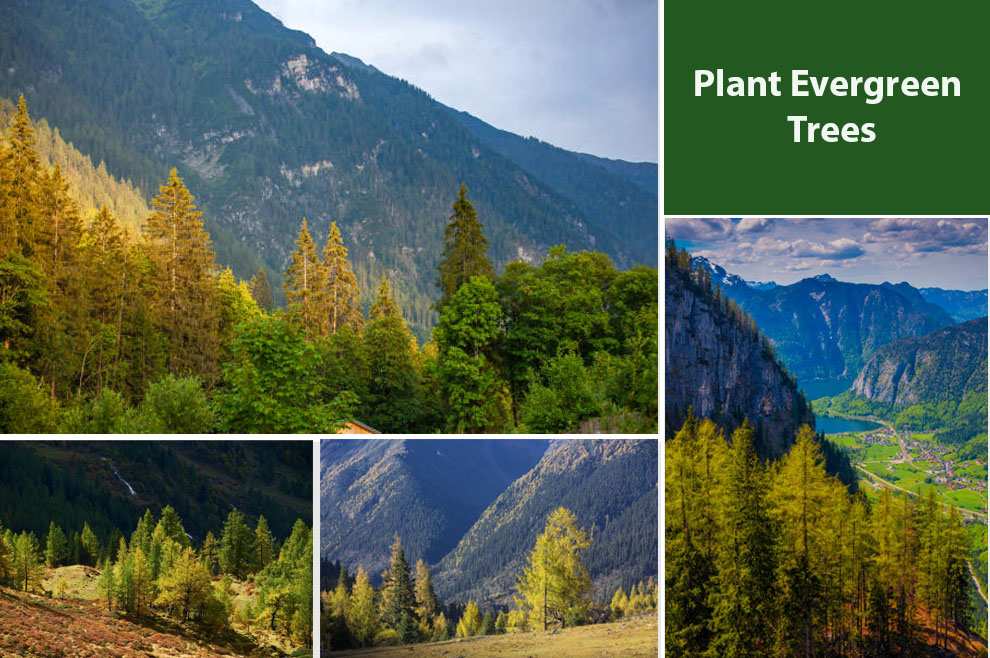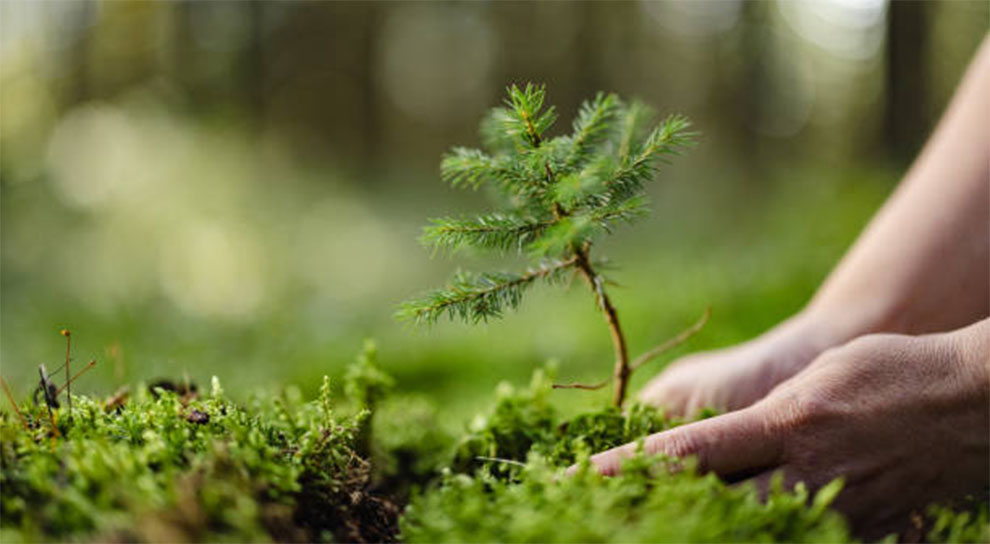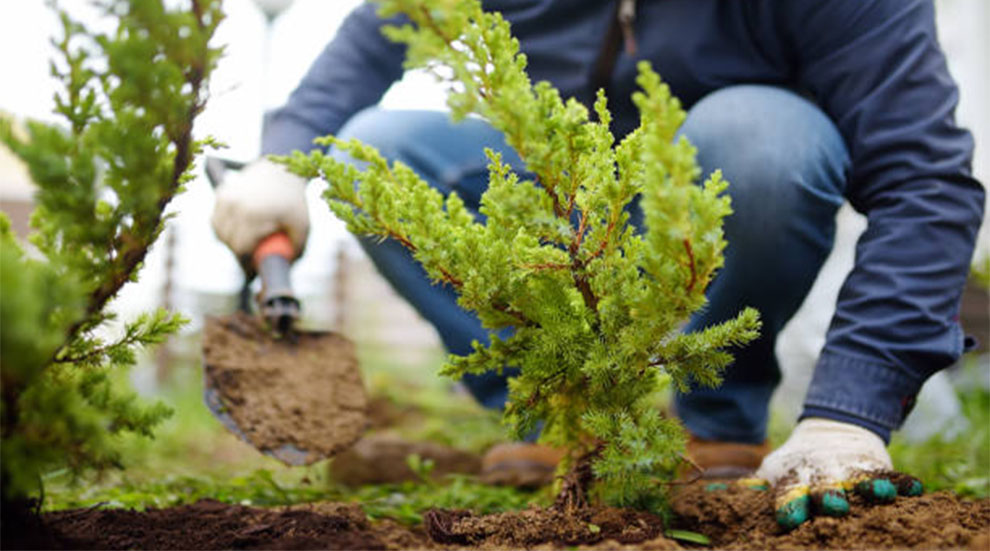When To Plant Evergreen Trees – The Best Time?
Choose the planting season wisely because timing Matters. Plant evergreen trees in spring for vigorous growth, in fall for strong roots, and in winter with caution, that too only if absolutely necessary.

Planting evergreens is a timeless endeavor, one that connects us with the enduring beauty of nature.
These steadfast companions, with their year-round foliage, not only grace our landscapes but also contribute to the health of our environment.
Whether you’re a budding horticulturist or a seasoned professional, understanding when to plant evergreen trees is essential for their successful growth and vitality.
Typically the best time to plant evergreens is in the spring or fall. Spring offers favorable conditions for root growth, while fall allows them to establish before winter. Winter planting is somewhat possible but requires special care due to cold temperatures.
In this article, we will walk you through these seasonal planting, exploring the nuances of when is it best to plant these remarkable trees and shrubs.
We’ll unravel the secrets of spring’s awakening, the tranquility of fall, and even the unexpected possibilities of winter planting. With a focus on simplicity and clarity, we’ll provide guidance that’s understandable to all.
What are Evergreens?
Evergreens include a diverse range of tree and shrub species, such as pines, spruces, and hollies, known for retaining their leaves or needles for extended periods, often several years.
This enduring greenery ensures that evergreens stand proudly clothed in foliage throughout the year, lending permanence to the natural world.
In landscaping, evergreens act as foundational elements, providing constant structure and color to gardens, parks, and yards.
They serve versatile roles, from creating privacy screens to serving as ornamental focal points.
Ecologically, evergreens are guardians of soil stability, offer crucial wildlife shelter and sustenance, and significantly contribute to carbon sequestration, combating climate change.
When Is The Best Time To Plant Evergreens Trees?
Evergreen trees, with their enduring charm, thrive when planted at the right time. Understanding the ideal seasons for planting them is essential to ensure the expected growth rate of evergreen trees and their longevity.
A. Spring Planting

Spring ushers in a season of renewal, making it an ideal time to plant evergreens. Advantages abound during this period. The soil is still moist from winter, allowing for easier root establishment.
Moreover, the moderate temperatures of spring create a favorable environment for initial growth. Gardeners should aim for early spring, just as the ground thaws, and before the heat of summer arrives.
B. Fall Planting

Fall’s cool embrace offers another excellent opportunity for evergreen planting. As deciduous trees shed their leaves, evergreens can stand out with their green foliage.
Cooler temperatures reduce the stress of transplanting, while the soil retains warmth, encouraging root development even as winter approaches.
Fall planting allows evergreens to establish roots before the dormant winter period, ensuring a strong start when spring returns.
C. Winter Planting (with Caution)

While less common, winter planting can be considered with caution. Challenges arise due to cold temperatures and frozen ground.
When undertaking winter planting, ensure the soil is workable, and consider using balled-and-burlapped trees for easier handling. Proper insulation and mulching are essential to protect the newly planted evergreens from frost.
| In summary, the ideal seasons for planting evergreens are spring and fall, each offering unique advantages. Spring provides a fresh start, while fall allows for root establishment before winter.
Winter planting should be approached cautiously and reserved for specific circumstances where it’s the only viable option. |
Factors to Consider While Planting Evergreen Trees
You need to keep the following things in mind before planting evergreens:
A. Location and Climate
Climate zones play a crucial role in determining the right planting time for evergreens. Warmer regions may have longer planting seasons, while colder climates require careful timing to avoid harsh weather.
Understanding your local climate zone is vital for successful evergreen planting, ensuring they can adapt and thrive in their new home.
B. The Variety of Evergreen Species You Plant
Different types of evergreens have unique growth patterns and preferences. Some thrive in early spring planting, while others do best in the fall.
Understanding the specific needs of the evergreen species you intend to plant is essential. Researching and tailoring your planting schedule to their requirements will enhance their chances of flourishing.
C. Soil Preparation
Soil quality is paramount for evergreen trees healthy lifespan. Before planting, soil testing is vital to assess pH levels, nutrient content, and drainage.
Based on the results, soil can be amended with compost or other organic matter to create optimal conditions for root development.
Proper soil preparation ensures that evergreens receive the essential nutrients and moisture they need to grow vigorously.
Step-by-Step Planting Guide for Evergreen Trees

So, we have covered when can you plant evergreens. Now, let’s focus on how to do it step-by-step.
A. Choosing the Right Evergreens
Selecting healthy evergreen plants is essential. Look for specimens with vibrant, green foliage and no signs of discoloration or disease. Inspect the roots; they should be well-developed and not circling the pot.
Choose a species suitable for your climate and space requirements. Purchasing from reputable nurseries or garden centers increases the likelihood of obtaining robust evergreens.
B. Site Preparation
Prepare the planting site meticulously. Start by clearing away any weeds or debris. Dig a hole slightly wider and no deeper than the root ball. Ensure the hole’s depth matches the root ball’s height.
Loosen the soil at the bottom and along the sides of the hole to facilitate root growth.
C. Planting Techniques
Place the evergreen in the hole, ensuring the top of the root ball aligns with the ground’s surface. Backfill the hole with the excavated soil, gently tamping it down to remove air pockets.
Water the tree thoroughly to settle the soil and eliminate remaining air gaps. Apply a layer of mulch around the base to conserve moisture and deter weeds.
D. Watering and Mulching
Proper watering is crucial for newly planted evergreens. Keep the soil consistently moist but not waterlogged.
Apply a layer of mulch around the base to retain soil moisture and regulate temperature. Monitor moisture levels, especially during dry spells, and adjust watering accordingly.
E. Ongoing Care and Maintenance
Evergreens require ongoing care to thrive. Prune dead or damaged branches, and fertilize as needed according to soil test results. Regularly inspect for pests or diseases, and address any issues promptly.
Providing consistent care ensures that your evergreen trees remain healthy and continue to enhance your landscape for years to come.
